 Products
Products
 Microrepair for enamal care
Microrepair for enamal care
- Toothbrushes and Accessories
 Gums Problems
Gums Problems- Sensitivity
 Mouthwash
Mouthwash- Professional Area
 Gums Problems
Gums Problems Mouthwash
Mouthwash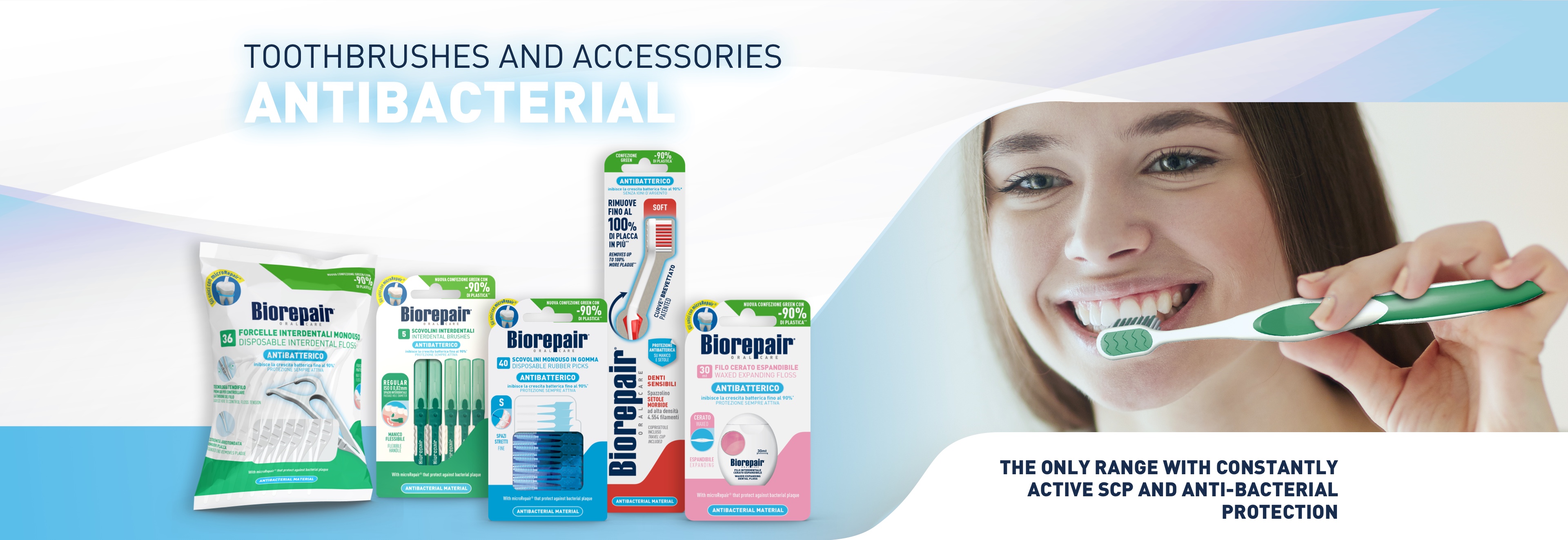
When we eat and drink, sugars and other food residues come into contact with our teeth and gums. These deposits contribute to the formation and accumulation of plaque. Dental plaque is a biofilm of bacteria, saliva and food residues. Initially sticky and a yellowish colour, if plaque is neglected it becomes tartar, a hard, dark layer that can only be removed by dental professionals.
Removing plaque is fundamental and needs to be done regularly to prevent gum inflammation, cavities and bad breath.
Plaque forms constantly on teeth, building up on 5 different surfaces:
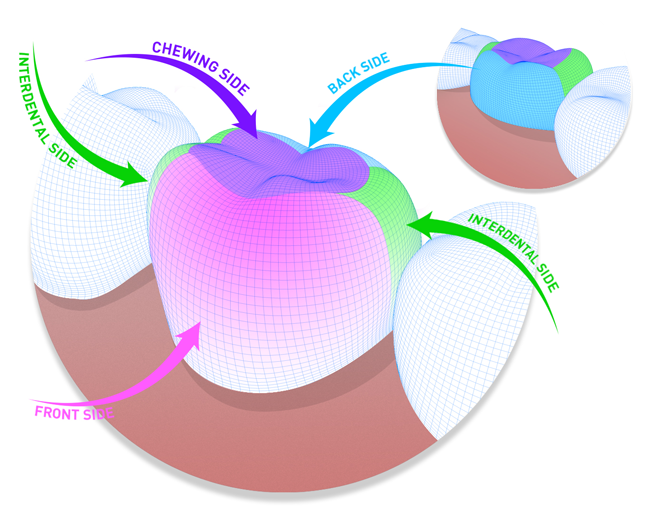
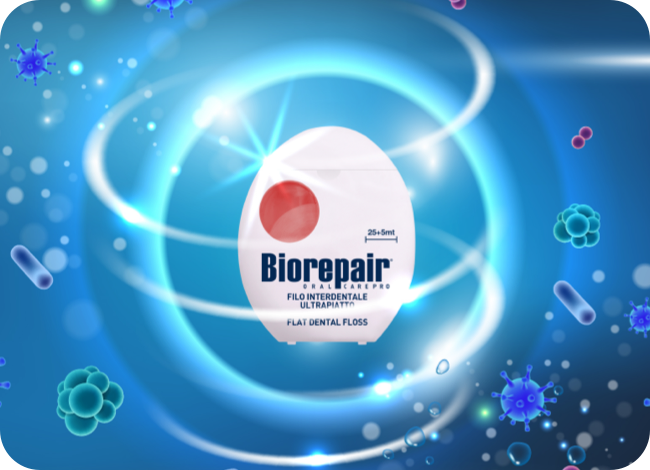
Thanks to the INNOVATIVE SELF CLEANING POLYMER, bacterial growth is blocked on all toothbrush materials and Biorepair accessories by up to 90%* for the entire life of the product.
Self Cleaning Polymer is the special polymerisation process that renders bacteriostatic all the materials in the Biorepair® accessory line. This innovative, biocide-free technology, based on natural oligoelements, combats bacterial proliferation and protects Biorepair® accessories to make them even safer. Bacteriostatic protection remains unaltered and effective over time.
There are different techniques for cleaning the exposed surfaces of teeth with a toothbrush. Dentists and dental hygienists increasingly recommend the Bass technique. This involves moving the toothbrush from the gums towards the teeth as this cleans teeth effectively without damaging them or irritating the gums.
CURVE is a patented toothbrush that has been researched and designed to facilitate this movement/technique and keep the bristles always parallel to the surface of the teeth. This allows large, internal and rear surfaces to be cleaned comfortably, with minimum pressure and without damaging the enamel or scratching gums.
A clinical comparison test has shown that Biorepair CURVE removes up to 100% more plaque* than classic straight or backward curving toothbrushes.
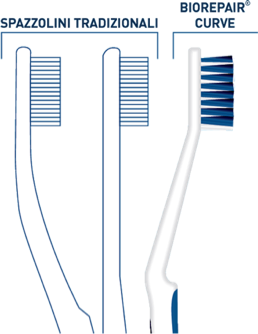
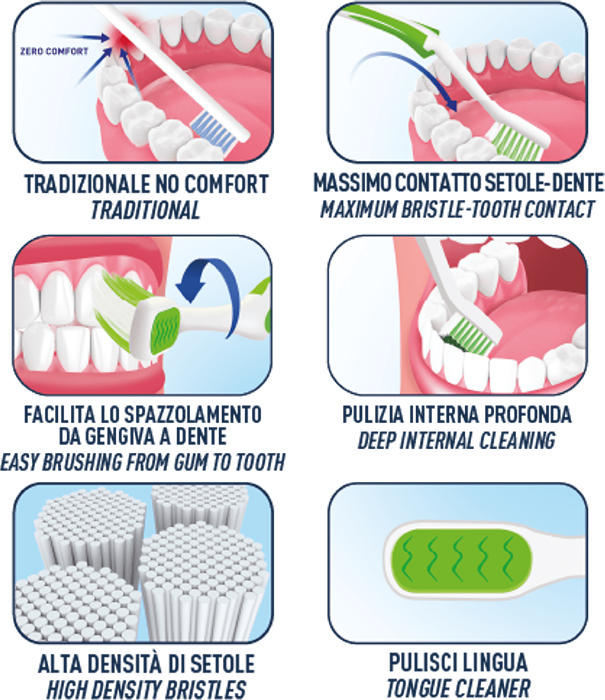
CURVE toothbrush heads are also innovative and designed to meet different needs. All of them have a very high density of delicate, super-fine filaments to guarantee deep and delicate cleaning as well as a handy rubber tongue cleaner on the back. The bristles, handle and bristle cover are all made with SCP to create constantly active anti-bacterial protection and increasingly safer oral hygiene.
Using just a toothbrush, however, it is impossible to clean the surfaces in the narrow spaces between the teeth, and it is there that plaque can accumulate easily. These spaces may be small but the plaque deposits can still cause serious gum problems and inflammation. From the moment adult teeth are fully formed, it is essential to clean the spaces between them every day with the right instruments: floss and dental picks.

The Biorepair® interdental cleaning range is unique and complete for all needs thanks to two useful Biorepair innovations:
There are different kinds of dental floss, waxed, expanding or flat, and dentists or dental hygienists will recommend which of them is best for certain teeth and needs. Use floss correctly to clean narrow spaces correctly and with minimum effort.
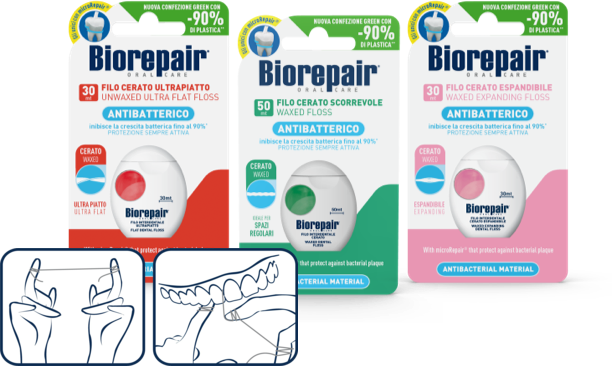
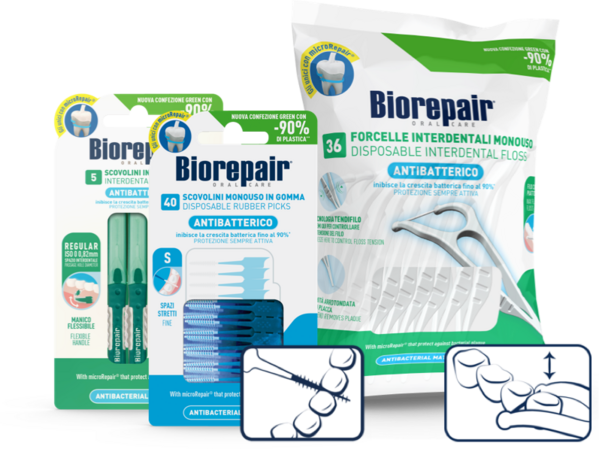
Disposable interdental floss picks are a valid alternative for anyone using dental floss for the first time.
Dental picks are perfect for cleaning the spaces between teeth. There are different sizes and types and rubber or disposable picks are extremely practical when you are away from home. In addition to cleaning the spaces between your teeth, they also give your gums a delicate and pleasant massage.
Choose the toothbrush with the filaments that best suit your needs and brush your teeth at least twice a day for 2-3 minutes.
After cleaning your teeth, at least once a day and preferably always, use a mouthwash to ensure antibacterial protection and deep-down hygiene.
Clean the spaces between your teeth with dental floss or a pick every day to eliminate any plaque residues and prevent the formation of tartar and other gum problems. Many people choose to do this before going to bed in the evening, to ensure it becomes a regular part of their daily oral hygiene routine.